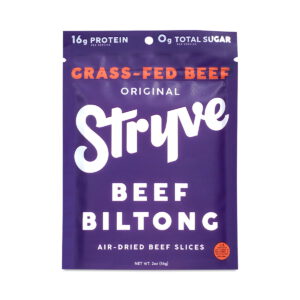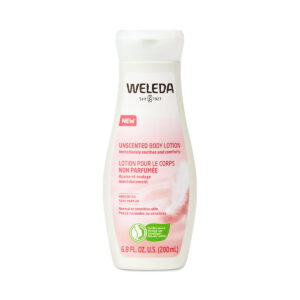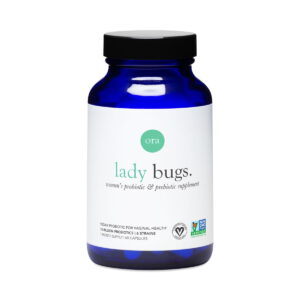- Understanding food label basics
- Nutritional facts: what to look for
- Ingredient lists: reading between the lines
- Serving sizes: portion control matters
- Health claims: discerning the truth
- Tips for making healthier choices
When it comes to grocery shopping, understanding food labels is essential for making healthy choices. Whether you’re shopping at a bustling farmers market or navigating the aisles of your local supermarket, having a keen eye for deciphering food labels can elevate your shopping experience. One of the best strategies is to approach your shopping list with a focus on whole, unprocessed foods, as these often have minimal packaging and simpler labels. Here are some practical tips to enhance your grocery shopping:
- Visit local farms or farmers’ markets: Not only do you support local agriculture, but you also get to know exactly what goes into your food. Produce picked at peak ripeness typically has better flavor and nutrients.
- Opt for organic where it counts: While organic choices can be pricier, focus on purchasing organic for the “Dirty Dozen,” which includes fruits and vegetables that have higher pesticide residues. Examples include strawberries, spinach, and apples.
- Explore vegan options: Even if you are not a vegan, incorporating plant-based foods can be both nutritious and budget-friendly. Look for lentils, chickpeas, and tofu, which are often cheaper than meat alternatives and packed with protein.
- Be mindful of ingredient lists: Sometimes a food label may claim to be “healthy” based on marketing, but if you can’t understand the ingredients, it’s best to avoid it. Stick to foods with short ingredient lists, highlighting whole ingredients.
- Consider bulk purchases: Buy grains, nuts, seeds, and dried fruits in bulk to save money and reduce packaging. This is a budget-friendly strategy that often leads you to healthier food options.
- Make use of online shopping: When buying groceries online, take advantage of filters that allow you to sort products by dietary needs. Additionally, always check for customer reviews and ratings to ensure product quality.
Shopping for fitness foods often involves looking for products high in protein and fiber but low in added sugars. Consider products like Greek yogurt, quinoa, or clean protein bars when shopping, as they make excellent meal supplements. With a little creativity and planning, you can create a diverse selection of foods that cater to your dietary needs and keep your pantry stocked with healthy options.
Finally, be aware of ingredient safety. Always be on the lookout for allergen warnings on food labels, especially if you or a family member has sensitivities. When shopping offline or online, be cautious of any food recalls and stay informed about the safety ratings of manufacturers.
Nutritional facts: what to look for
The nutritional facts panel is perhaps the most critical component of a food label, as it provides essential information about the food’s nutritional content that can guide you in making healthier choices. When analyzing this section, here are the key elements to focus on:
Calories: This number indicates how much energy you will get from a serving of the food. For individuals aiming to maintain or lose weight, awareness of calorie intake is vital. Understanding how calories fit into your daily needs is the first step toward balanced eating.
Nutrients to Limit: These include saturated fats, trans fats, cholesterol, and sodium. High levels of these nutrients are linked to various health issues, including heart disease, stroke, and high blood pressure. Aim to limit these in your daily diet. For example, the American Heart Association recommends keeping saturated fat intake to less than 6% of total daily calories.
Nutrients to Encourage: Look for foods that contain high amounts of dietary fiber, vitamin D, calcium, potassium, and iron. These nutrients are often lacking in many diets and play crucial roles in maintaining good health. Foods rich in fiber can help with digestion and prevent common issues like constipation, while potassium helps manage blood pressure.
Daily Value (DV): This percentage shows how much a nutrient in a serving of food contributes to a daily diet based on a 2,000-calorie diet. While individual needs may vary, checking the %DV can help you determine if a food is high or low in a nutrient. Generally, 5% DV or less is considered low, and 20% DV or more is considered high.
Here’s a table that summarizes some common nutrients found on food labels:
| Nutrient | Recommended Daily Value | What to Limit | What to Encourage |
|---|---|---|---|
| Calories | 2,000 (varies by individual) | ||
| Saturated fat | 20g | Limit to < 6% of total daily calories (120 calories) | |
| Trans fat | 0g | Avoid | |
| Sodium | 2,300mg | Limit | |
| Dietary fiber | 25g | Aim for more | |
| Vitamin D | 20mcg | Aim for more | |
| Calcium | 1,300mg | Aim for more | |
| Potassium | 4,700mg | Aim for more | |
| Iron | 18mg | Aim for more |
When reading the nutritional facts, it’s also crucial to consider the serving size prominently displayed at the top of the panel. All the information regarding calories and nutrients is based on that specific serving size, which may differ from what you typically consume. For example, a bag of chips may state that a serving size is 10 chips, but if you eat 20, you need to double the calories and nutrients listed.
By paying attention to these details on food labels, you can make informed decisions and steer clear of misleading advertising, ultimately leading to healthier dietary choices that benefit overall well-being.
Ingredient lists: reading between the lines

Decoding ingredient lists can feel like a daunting task, but with a little guidance, you can navigate them like a pro. The first step is to remember that ingredients are listed in order of quantity, from highest to lowest. This means that the first few ingredients make up the bulk of the product. Look for whole foods near the top of the list, as they indicate a healthier option.
When shopping, steer clear of terms that may suggest a product is healthier than it really is. Words like “natural” or “fortified” can often be misleading. Instead, focus on recognizable ingredients that you would actually use in your own kitchen. For instance, if you see “high fructose corn syrup” as one of the first ingredients, it’s a sign to choose something else in favor of products with natural sweeteners like honey or maple syrup, or even better, no added sugars.
For families looking to include healthy foods, consider snatching up items with short ingredient lists. Examples include simple nut butters (just nuts and salt), plain yogurt, and canned beans with no additives. These not only nourish your body but also offer tremendous versatility in meal prep.
If you’re prioritizing vegan foods, there are plenty of plant-based options available. Look for products where legumes, grains, and vegetables take center stage. For instance, chickpeas and quinoa can serve as the primary ingredients in packaged meals and snacks. Vegan alternatives may not always be the healthier choice, so verify the ingredients; some may contain sugars, preservatives, or unhealthy fats.
Budget-conscious consumers should be aware of product formulations. Canned and frozen vegetables often retain most of their nutrients and can be more affordable than fresh produce, especially out of season. Check for options packed in water or their own juices rather than heavy syrups or salty brines.
Organic foods can make a significant impact on your health, especially when it comes to the safety of ingredients. While not every item needs to be organic, consider investing in organic options for items that you eat frequently—especially those that carry a higher risk of pesticide exposure, like berries, leafy greens, and apples. Opting for bulk organic grains and legumes can also save you money while ensuring high-quality ingredients.
When it comes to safety while shopping online, always read customer reviews and product ratings. This practice not only provides insight into quality but can also alert you to potential ingredient concerns. If a product piques your interest, look up additional information about the brand’s sourcing practices and quality control measures before hitting ‘purchase.’
Always be conscious of allergens and cross-contamination warnings on every label. If you or family members have specific food allergies, rigorous label checking is imperative. Many manufacturers are improving clarity when it comes to ingredient safety, so don’t hesitate to reach out to brands directly for confirmation if needed.
Implementing these tips while grocery shopping will help you feel empowered to make healthy choices for your family or personal fitness journey, ensuring you’re equipped with the knowledge to read between the lines of ingredient lists. Take your time, do your research, and soon you will be a savvy grocery shopper capable of deciphering even the most convoluted food labels.
Serving sizes: portion control matters
Understanding serving sizes is crucial for maintaining portion control and making healthier choices. The serving size displayed on the food label serves as a baseline for evaluating the nutritional content of the product. It can often be misleading, as it might not reflect the amount you typically consume. When deciphering food labels, keep in mind that many packages contain multiple servings. For instance, while a bag of snacks may indicate a serving size of one ounce, you might be tempted to consume two or three ounces in one sitting. This simple miscalculation can significantly increase your calorie intake and alter your understanding of how much nutritional benefit you’re actually getting.
To effectively manage portion sizes, familiarize yourself with measuring tools like cups or a food scale. This allows for adjusting actual serving sizes to align more closely with recommended portions. Using such tools can help you recognize what a true serving looks like, which may differ from what is provided on the label. Another tip is to visualize portion sizes using common objects. For example, a serving of meat should be about the size of your palm, while a serving of cheese can be similar to the size of a pair of dice. Employing these visual cues can support your efforts in moderating portions without needing constant measuring.
When incorporating packaged foods into your diet, consider how frequently you purchase them. If a product contains a serving size that is markedly smaller than what you typically consume, it might be wise to either adjust your intake or search for alternatives. The effort may seem daunting, but being mindful of serving sizes can prevent overconsumption and help you steer clear of hidden calories.
As you grocery shop, remember that maintaining moderation goes beyond just the numbers on the labels. It is equally important to balance your meals throughout the day. If you indulge in a larger portion during lunch, try to opt for a lighter dinner. This kind of rotational eating fosters wellness and keeps your diet versatile.
“Control your portions, and you control your weight.”
Ultimately, managing your portion sizes is an integral part of understanding food labels. By recognizing how varying serving sizes influence your overall intake, you empower yourself to make more informed dietary choices. Taking the time to evaluate and adjust serves to create a healthier relationship with food where moderation and nutrition triumph over mindless eating.
Health claims: discerning the truth
 While it may be tempting to trust marketing buzzwords and health claims on products, it’s essential to approach them with a critical eye. Food labels often feature phrases such as “low-fat,” “sugar-free,” or “healthy” that can create an impression of wellness, but unraveling the reality behind these claims is crucial. For instance, a product labeled “low-fat” might have compensatory ingredients like high sugars or artificial additives that don’t align with healthy choices. Familiarizing yourself with the standards governing these claims will help you discern their legitimacy.
While it may be tempting to trust marketing buzzwords and health claims on products, it’s essential to approach them with a critical eye. Food labels often feature phrases such as “low-fat,” “sugar-free,” or “healthy” that can create an impression of wellness, but unraveling the reality behind these claims is crucial. For instance, a product labeled “low-fat” might have compensatory ingredients like high sugars or artificial additives that don’t align with healthy choices. Familiarizing yourself with the standards governing these claims will help you discern their legitimacy.
One common claim to scrutinize is “natural.” While it does not imply any specific regulatory standards, it can still lead consumers to believe it signifies a healthier product. To navigate through potential deceptions, check the ingredient list to ensure that it is composed primarily of whole, recognizable foods. Moreover, health claims often focus heavily on singular benefits, such as being high in protein, while neglecting other essential aspects like sugar or sodium content. The complete picture requires examining the overall nutritional composition.
Don’t be easily swayed by health halos that surround trendy ingredients. A food item can boast superfood ingredients like chia or quinoa, yet may also harbor unhealthy fats or hidden sugars. Instead of relying on these claims, make it a habit to read the nutritional facts section and ingredient list closely. When a product makes a health claim, it’s vital to investigate the entire product to identify whether the benefits outweigh any negatives.
Further complicating matters are health endorsements or certifications that some products may flaunt. While they can offer a semblance of credibility, it’s wise to research the organizations behind these endorsements. Not all certifications hold equal weight; some may simply promote products that meet minimal criteria. By digging deeper into the affiliations of trusted health organizations, you can better understand the standards they uphold.
As you strive to make informed decisions during grocery shopping, maintaining an element of skepticism towards health claims can serve you well. Remember that savvy shopping is about empowerment and understanding; the clearer you are about what’s truly healthy, the more confidently you can navigate the store aisles.
- What does “low-fat” really mean on food labels?
- “Low-fat” indicates that a product has a reduced level of fat compared to similar items, but it often compensates with added sugars or fillers that may not support healthy choices.
- Are health claims on labels reliable?
- Health claims can often be misleading. It’s important to look beyond the advertising and examine the overall nutritional content and ingredient list for a complete picture.
- How can I identify if a product is truly “natural”?
- The term “natural” is not strictly regulated, so always read the ingredient list to see if it contains whole, recognizable foods without additives or preservatives.
- Do all organic products guarantee healthy choices?
- While organic products minimize exposure to pesticides, they can still be processed and contain unhealthy ingredients, so it’s essential to review the full ingredient list.
- What should I look for in health certifications?
- Research the organizations behind health certifications to ensure they are reputable and have stringent criteria. Qualified endorsements can provide helpful guidance.
- Are all superfoods healthy when included in products?
- Not necessarily. Many products claiming to contain “superfoods” may also have added sugars, unhealthy fats, or preservatives that undermine their health benefits.
- How can I avoid deceptive health claims?
- Avoid relying solely on front-label marketing; always pay attention to the nutritional facts and ingredient lists to make informed decisions about food products.
Tips for making healthier choices
Making healthier choices while grocery shopping doesn’t have to be overwhelming. Here are some simple yet effective tips to navigate both online and offline shopping with confidence:
- Prioritize whole foods: When browsing the grocery store, focus on the perimeter of the store where fresh produce, lean meats, and dairy typically reside. These foods are often less processed and more nutrient-dense, making them the foundation of a healthy diet.
- Incorporate seasonal local produce: Shopping for fruits and vegetables that are in season not only enhances flavor but often reduces costs. Visit local farmers’ markets or check for community-supported agriculture (CSA) options, which can provide the freshest ingredients and support local farmers.
- Evaluate plant-based proteins: If you’re exploring vegan options, look beyond traditional meat substitutes. Foods like tempeh, seitan, and a variety of beans are rich in nutrients and often more economical. These options can be the stars of many meals, packed with protein and fiber.
- Watch for added sugars: Many processed foods, even those that seem healthy, can contain hidden sugars. Check food labels for ingredients such as corn syrup, cane sugar, or anything ending in “-ose” (like glucose or fructose). Aim for options with no added sugars to maintain your energy levels.
- Utilize grocery apps: Many apps allow you to create grocery lists and provide nutritional information for items. Use them to compare prices, find discounts, or track your dietary preferences conveniently. This can save you time and help stick to a healthy plan.
- Plan meals ahead: Dedicate a short time each week to plan meals that include healthy choices. Create a shopping list based on your meal plan, which minimizes impulse buys and ensures you have the right ingredients on hand.
- Prepare snacks: Avoid unhealthy snacking by preparing your own. Consider portioning out nuts, making veggie packs with hummus, or blending smoothies that you can take on the go. This way, you stay energized and avoid reaching for less healthy options.
- Choose frozen options smartly: Frozen fruits and vegetables can be just as nutritious as their fresh counterparts and are often more economical. They can be stored for longer periods, reducing food waste while providing the nutrients needed when fresh options aren’t available.
- Be cautious with online purchases: When shopping online, use filters to find healthier ingredients and check customer reviews for quality assurance. Be aware of expiration dates and shipping conditions to ensure you receive fresh products.
- Focus on transparency: Choose brands that are open about their sourcing and production processes. Look for certifications or labels that indicate ethical practices, such as non-GMO or fair trade, which often align with healthier choices.
By following these tips while grocery shopping, you can empower yourself to make informed decisions that contribute to a healthier lifestyle for you and your family. Take the mystery out of food labels, and soon, selecting nutritious options will become second nature.
New Customers Offer!
Free Gift for the new customer
$24 Value, When You Subscrib Visit Thrive Market












